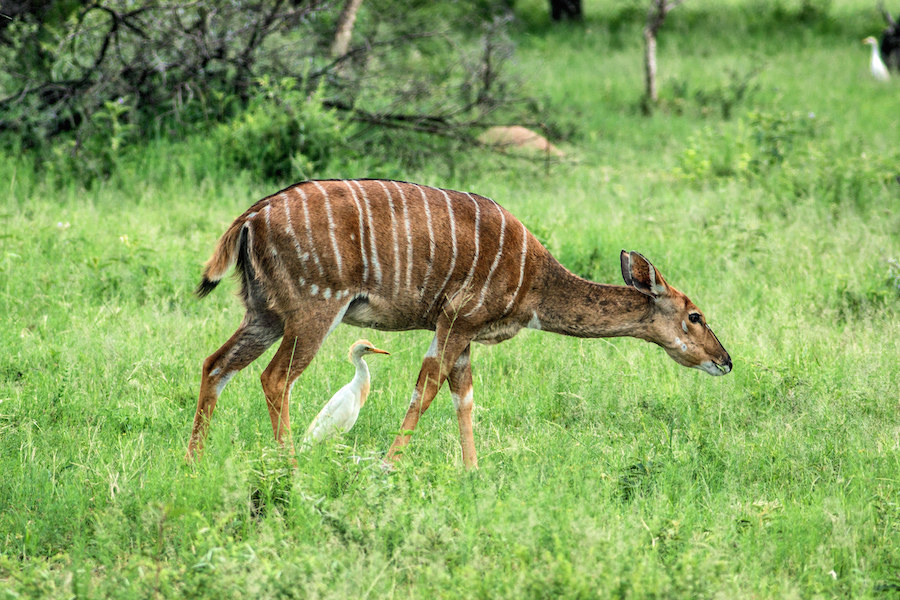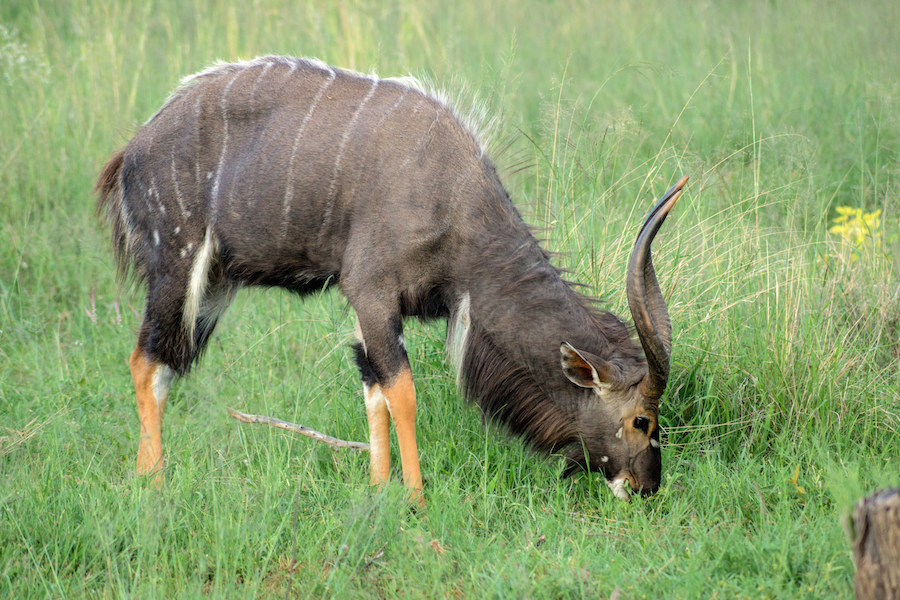The common name of the antelope is derived from the traditional Zulu word for the animal, inxala.
Nyala are the most striking of antelopes and also exhibit the greatest sexual dimorphism (difference between the sexes) Females are red-brown in colour and characteristically striped along the ridge of the back with up to 18 white lines. These form the animal’s camouflage, breaking up their solid outline and helping them to blend into their thicket habitats. The lines are known as disruptive markings.
Nyala ewe at Mabalingwe Nature Reserve | © Photography by Marthinus Duckitt
© Photography by Marthinus Duckitt
Males are slate Grey with up to 14 white stripes along the back and white spots on the flanks and belly (also disruptive markings) The lower part of each leg is yellow in colour and contrasts strongly with the rest of the body. A shaggy white-tipped mane extends down the backs and a fringe along the under neck and belly. Males have spiraled horns which females lack. The male’s coat plays a vital function in social interactions with other males and is a form of visual communication whereby bulls express their individual impressiveness and superiority.
DID YOU KNOW?
Nyala regularly follow troops of foraging baboons and vervet monkeys in order to benefit from their leftovers and other potential edible items knocked down from the trees. Nyala relish fallen flowers and fruit.
Vervet Monkey at Mabalingwe Nature Reserve | © Photography by Marthinus Duckitt




